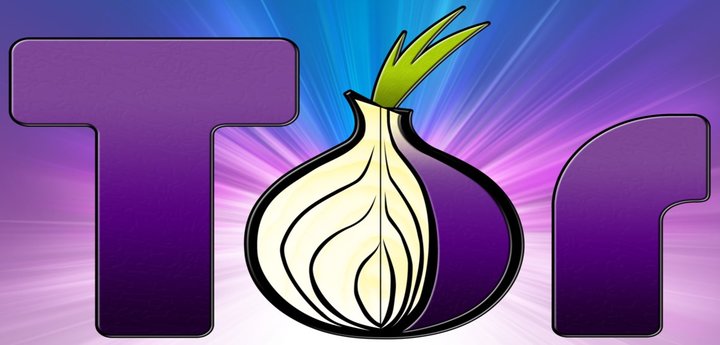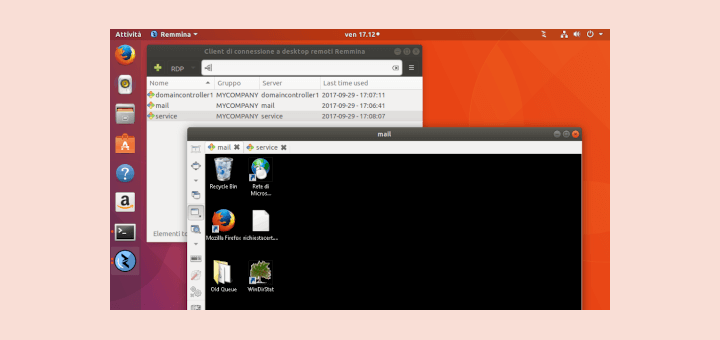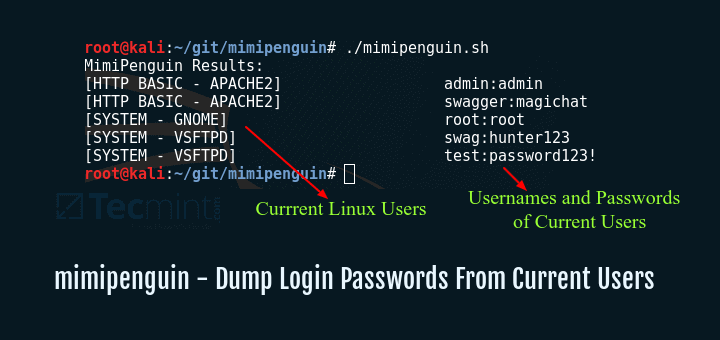How to Install Lua Scripting Language in Linux
Lua is a free and open-source, powerful, robust, minimal, and embeddable scripting language. It’s extensible and interpreted scripting language that is dynamically typed, and run by interpreting bytecode with a register-based virtual machine.
Lua runs on all if not most Unix-like operating systems including Linux and Windows; on mobile operating systems (Android, iOS, BREW, Symbian, Windows Phone); on embedded microprocessors (ARM and Rabbit); on IBM mainframes, and many more.
See how Lua programs work in the live demo.
Lua Features:
- Builds on all systems with a standard C compiler.
- It’s remarkably lightweight, fast, efficient, and portable.
- It’s easy to learn and use.
- It has a simple and well-documented API.
- It supports several types of programming (such as procedural, object-oriented, functional, and data-driven programming as well as data description).
- Implements object-oriented via meta-mechanisms.
- It also brings together straightforward procedural syntax with formidable data description constructs rooted around associative arrays and extensible semantics.
- Comes with automatic memory management with incremental garbage collection (thus making it perfect for real-world configuration, scripting, and also breakneck prototyping).
How to Install Lua in Linux
Lua package is available in official repositories of major Linux distributions, you can install the latest version using the appropriate package manager on your system.
------- On Debian, Ubuntu & Mint ------- $ sudo apt install lua5.3 ------- On RHEL, CentOS, Rocky & AlmaLinux ------- # yum install epel-release # yum install lua ------- On Fedora Linux ------- # dnf install lua
Note: The current version of the Lua package in the EPEL repository is a little older, therefore to install the latest release, you need to build and install it from the source as explained below.
Install Lua from Sources
First, ensure that you have development tools installed on your system, otherwise, run the command below to install them.
------- On Debian, Ubuntu & Mint ------- $ sudo apt install build-essential libreadline-dev ------- On RHEL, CentOS, Rocky & AlmaLinux and Fedora ------- # yum groupinstall "Development Tools" # yum install readline readline-devel
Then to build and install the latest release (version 5.4.4 at the time of this writing) of Lua, you need to download the lua source file or run the following commands to download the package tarball, extract, build and install it.
$ mkdir lua_build $ cd lua_build $ curl -R -O http://www.lua.org/ftp/lua-5.4.4.tar.gz $ tar zxf lua-5.4.4.tar.gz $ cd lua-5.4.4 $ make linux test $ sudo make install
Once you have installed it, run Lua interpretor as shown.
$ lua Lua 5.4.4 Copyright (C) 1994-2022 Lua.org, PUC-Rio >
Using your favorite text editor, you can create your first Lua program as follows.
And add the following code to the file.
print("Hello World") print("This is Tecmint.com and we are testing Lua") Save and close the file. Then run your program as shown.
For more information and to learn how to write Lua programs, go to: https://www.lua.org/home.html
Lua is a versatile programming language being used in numerous industries (from the web to gaming to image processing and beyond), and it’s designed with a high priority for embedded systems.
If you encounter any errors during installation or simply want to know more, use the comment form below to send us your thoughts.
Aaron Kili is a Linux and F.O.S.S enthusiast, an upcoming Linux SysAdmin, web developer, and currently a content creator for TecMint who loves working with computers and strongly believes in sharing knowledge.
Each tutorial at TecMint is created by a team of experienced Linux system administrators so that it meets our high-quality standards.
Related Posts
15 thoughts on “How to Install Lua Scripting Language in Linux”
Thanks for sharing… How do I remove this Lua installation? I want to upgrade to the newest 5.4.4 Lua on Linux Mint 20.3 Reply
How exactly do you add Lua to conky? I am a newbie and therefore need step-by-step instructions. Reply
For those who need a Windows solution, I found a good source that installs Lua 5.1, 5.2, and 5.3, plus LuaRocks for all three. It’s current, and actively maintained. It’s called “Multi-Lua for Windows” and can be found on GitHub: https://github.com/Tieske/luawinmulti You’ll need to install a C compiler, such as MinGW, as this project compiles everything from source, Lua and Luarocks alike. Rather than running a Lua interpreter in its own shell window, this Lua runs in the built-in Windows Command Shell window. Reply
Suggestion: After installing Lua, install “LuaRocks“, which is Lua’s package repository (similar to CPAN for Perl and PyPI for Python). Lua was designed to be embedded and extensible, so it depends on external libraries for a number of important functions that are internal to most other languages. This includes libraries for working with the host file system, for socket I/O (networking), etc., plus things like unit testing, logging, and so forth. Lua’s repo packages are called “rocks” (Lua rocks… Moon rocks… get it?), so you can search for, install, update your “rocks” using LuaRocks. LuaRocks installs separate local package caches for each Lua version. Lua rocks are typically coded in C , so they need to be compiled from source by LuaRocks in order to be installed. This is usually not an issue for Linux hosts, but for Windows installations you’ll need to have a C compiler installed. I use MinGW for this on my Win platforms. Finally, there are two ways to install LuaRocks. I suggest the “bootstrapping” method, which installs LuaRocks as a Lua rock. The advantage of this method is that LuaRocks can be updated in the future by asking LuaRocks to update itself: “ luarocks install luarocks “. Reply
Getting started
Lua is a powerful and fast programming language that is easy to learn and use and to embed into your application.
Lua is designed to be a lightweight embeddable scripting language. It is used for all sorts of applications, from games to web applications and image processing.
See the about page for details and some reasons why you should choose Lua.
See what Lua programs look and feel like in the live demo.
A good place to start learning Lua is the book Programming in Lua, available in paperback and as an e-book. The first edition is freely available online. See also course notes based on this book.
The official definition of the Lua language is given in the reference manual.
See the documentation page and the wiki for more.
Our community is friendly and will most probably help you if you need. Just visit the mailing list, the chat room, and stackoverflow.
If you need help in Portuguese, join the Lua BR mailing list and visit pt.stackoverflow.
See also the FAQ, the community-maintained wiki and LuaFaq, and the much longer uFAQ.
If you need to complement the standard Lua libraries to handle more complex tasks, visit LuaRocks, the main repository of Lua modules. See also Awesome Lua, a curated list of quality Lua packages and resources. The lua-users wiki lists many user-contributed addons for Lua.
You can help to support the Lua project by buying a book published by Lua.org and by making a donation.
You can also help to spread the word about Lua by buying Lua products at Zazzle.
Use the live demo to play with Lua if you don’t want to install anything on your computer.
To run Lua programs on your computer, you’ll need a standalone Lua interpreter and perhaps some additional Lua libraries. Pre-compiled Lua libraries and executables are available at LuaBinaries. Use your favorite text editor to write your Lua programs. Make sure to save your programs as plain text. If you want an IDE, try ZeroBrane Studio.
If you use Linux or Mac OS X, Lua is either already installed on your system or there is a Lua package for it. Make sure you get the latest release of Lua (currently 5.4.6).
Lua is also quite easy to build from source, as explained below.
Lua is very easy to build and install. Just download it and follow the instructions in the package.
Here is a simple terminal session that downloads the current release of Lua and builds it in a Linux system:
curl -R -O http://www.lua.org/ftp/lua-5.4.6.tar.gz tar zxf lua-5.4.6.tar.gz cd lua-5.4.6 make all test
If you use Windows and want to build Lua from source, there are detailed instructions in the wiki.
To embed Lua into your C or C++ program, you’ll need the Lua headers to compile your program and a Lua library to link with it. If you’re getting a ready-made Lua package for your platform, you’ll probably need the development package as well. Otherwise, just download Lua and add its source directory to your project.
Last update: Sun May 14 00:32:29 UTC 2023
Lua язык программирования установка
Вся серия не будет подчиняться какой-то системе. Уроки будут последовательно вводить ряд конструкций языка, чтобы уже к третьему или четвёртому уроку вы уже могли писать свои программы. Моя цель — подтолкнуть вас к самостоятельному изучению языка, помочь ощутить его, а не разъяснить от А до Я — если хотите освоить язык полностью, читайте справочное руководство (которое, хоть и скверно, переведено на русский язык: http://www.lua.ru/doc/). Чем раньше вы перейдёте от уроков «для чайников» в Сети к изучению справочника, тем лучше.
Если что-то непонятно — обязательно задайте вопрос в комментариях, и я и другие участники постараемся вам помочь.
Lua — популярный, несложный для освоения встраиваемый интерпретируемый динамически типизированный язык программирования общего назначения. Нет, вам необязательно понимать и половины слов, сказанных в предыдущем предложении — главное знайте, что он популярный и несложный. Кстати, простотой, а также маленьким размером дистрибутива (около 150 килобайт), он и заслужил свою популярность. Скрипты на Lua поддерживаются большим количеством приложений, в том числе играми. World of Warcraft и S.T.A.L.K.E.R. используют язык Lua. Мой любимый игровой движок, LÖVE, позволит вам с помощью Lua с лёгкостью создавать разнообразные игры. Как видите, Lua открывает вам немалые горизонты!
Прежде чем мы начнём, вам следует обустроить среду для программирования: то есть, найти программу, которая принимала бы написанный вами код на Lua и исполняла его: интерпретатор. Тут есть три варианта:
1. Скачать официальный дистрибутив Lua с одного из сайтов, поставляющих их.
С официального сайта Lua можно скачать только исходные коды интерпретатора. Однако поизучав http://lua.org/download.html в разделе Binaries, вы можете обнаружить ссылки на сайты с исполняемыми файлами для Windows. Один из них: http://joedf.users.sourceforge.net/luabuilds/. Загрузите оттуда один из архивов (совпадающий с вашей платформой: Win32 или Win64) и распакуйте его куда-нибудь, желательно в каталог с коротким путём: вроде C:\lua. Отныне я буду полагать, что вы пользуетесь Windows, и ваш интерпретатор лежит именно там.
Пользователям операционных систем на базе Linux в этом смысле проще: им достаточно воспользоваться пакетным менеджером и установить Lua из репозиториев. В Debian и Ubuntu это делается командой apt-get install lua, а в Fedora, Red Hat и производных дистрибутивах — yum install lua. Однако не доверяйте мне слепо и обратитесь к справочнику вашей операционной системы, чтобы узнать, как именно это делается у вас.
2. Использовать онлайн-интерпретатор.
Находится по адресу http://www.lua.org/demo.html. На первых порах его может хватить, однако в дальнейшем, когда мы коснёмся модулей, вы будете вынуждены использовать оффлайн-версию. Пользоваться онлайн-интерпретатором очень просто: введите в окошко с текстом вашу программу и нажмите кнопку Run. Программа будет исполнена, в окошке Output покажется вывод вашей программы, а также отчёты об ошибках, если таковые были вами допущены.
Например ZeroBrane Studio: http://studio.zerobrane.com/. Есть и другие — поищите в Интернете.
В ходу сейчас две несколько различающиеся версии Lua: 5.1 и 5.2. Я буду ориентироваться на самую последнюю версию — версию 5.2, но обязательно укажу на важные различия между ей и 5.1, так как последняя тоже достаточно распространена. Кстати, Lua 5.1 исполняет код в полтора раза быстрее, чем Lua 5.2, чтобы вы знали.
Итак, начнём. Создайте в изолированной от посторонних файлов папке файл main.lua и напишите в него:
После чего запустите в командной строке (не забудьте переместиться в директорию с main.lua с помощью команды cd):






